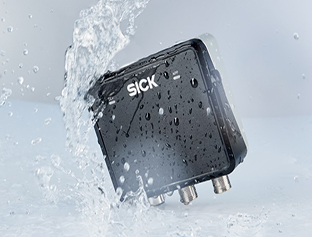Sick develops RMS1000 Anti-Collision Sensor
26 January 2022Sick has developed a radar sensor for collision avoidance duties in cranes operating in extreme weather or harsh industrial conditions.
The Sick RMS1000 Radar Sensor is designed to achieve new levels of availability and 24/7 detection performance in challenging outdoor environments such as for cranes in ports, container terminals and transport hubs.
The company has spent several years developing a new platform for anti-collision radar sensor technology and the Sick RMS1000 is the latest release in the product family. It is first in a roll-out of radar sensors on the platform, which will see 2D and 3D models launched in the near future.
“Collision avoidance is an important protection in ports and transport hubs, for example, on rail-mounted gantry cranes to avoid costly collisions or operating stoppages,” said Neil Sandhu, national product manager, Sick UK.
“The RMS1000 can detect a large object, such as a vehicle, up to 100m distance, and a human being up to around 50m. Its technology makes it really easy to set up and adapt to specific layouts on the ground.”
The Sick RMS1000 uses 61GHz FMCW (Frequency Modulated Continuous Wave) technology to detect obstacles up to 100m away in up to four monitored areas simultaneously, as well as to determine distance and radial speed.
The rugged and compact IP67/IP69-rated sensor can be easily fitted to offer more robust protection to existing operating machinery, as well as integration into new machinery designs.
Adjustment of the sensor’s parameters is straightforward using its SOPAS AIR software tool using a standard web browser. Users can set up to four freely-configurable monitoring areas, as well as adjust the sensor’s 120° operating angle to adapt to the application. The large scanning range allows for detection angles of ± 60° (azimuth) and ± 4° (elevation).

